The Nissan Leaf was one of the pioneers of electrification. This compact hatchback made electrified motoring a reality when it first arrived back in 2010. Now in its second generation, the Leaf is available in two flavors and can travel longer distances. However, Nissan is also facing strong competition as more automakers electrify their lineups with EVs and hybrids. Despite being one of the older mainstream EVs, the Leaf offers many tools to help you learn the ins and outs of electrified motoring. Does this mean the Leaf is the ideal EV for first-time owners?
2021 Nissan Leaf exterior
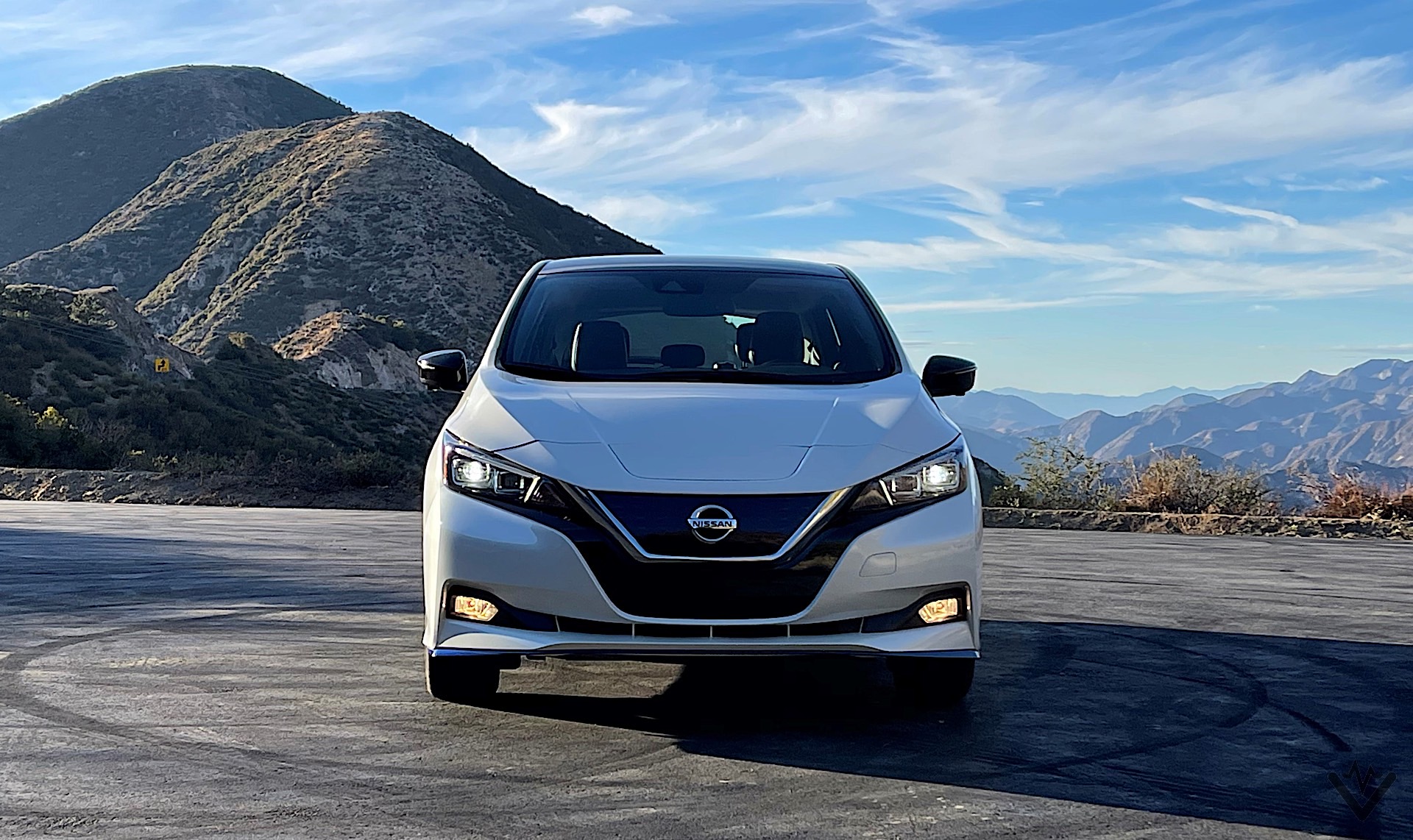
One look at the Nissan Leaf and you’ll immediately notice that it’s shed the quirky, spaceship like looks. That doesn’t mean it’s unattractive because the second-generation car has aged quite well. There’s a nice balance between familiar design cues and futuristic ones giving the Leaf its handsome appearance. Cool boomerang-like taillights that accentuate the car’s curves while the two ice cube-shaped projector housed in each headlight cluster creates a tasteful yet modern front fascia.
2021 Nissan Leaf interior
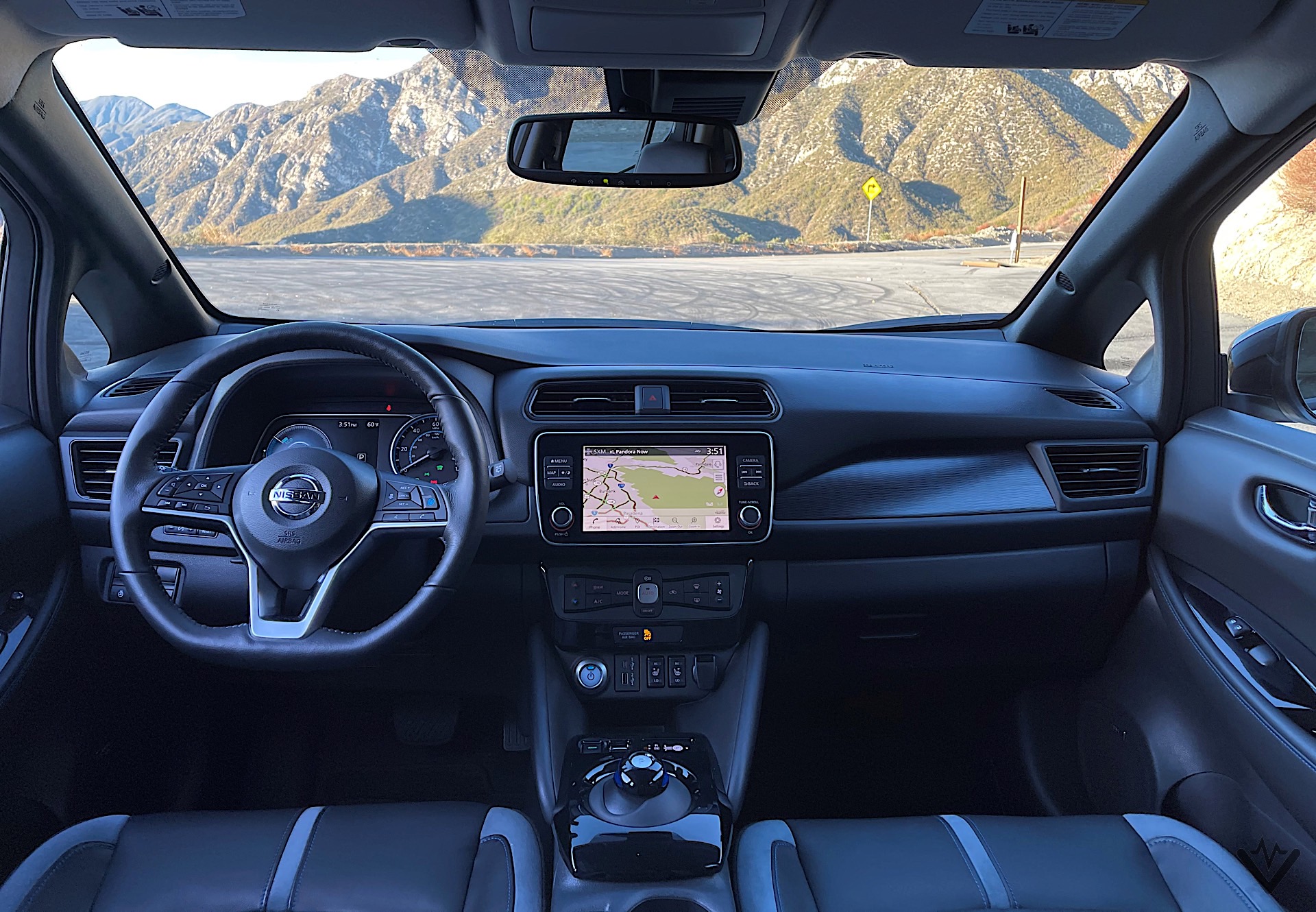
The blending of familiar and futuristic cues continues in the interior. You get a conventional dash layout but the e-shifter retains the fun ball-shaped selector with the park button on top. Build quality lacks consistency; there’s a mix of soft padded surfaces and hard plastics, the latter of which feels chintzy. Wind buffeting is noticeable at highway speeds, especially around the A-pillars. Road and tire noise is well-controlled even on poorly maintained surfaces.
Since it’s a hatchback, the Leaf is surprisingly accommodating. The front seats are comfortable and supportive for long drives but tall people may find headroom tight because there’s not enough vertical adjustment. Rear-seat occupants have generous head and legroom despite the larger battery raising the floor slightly. Five people can fit in the Leaf for a quick lunch run but keep it to four for maximum comfort. Should you need to carry stuff, the Leaf’s cargo area is generous. Just beware of the Bose audio system’s amp on the SL trim, which is mounted back there. Folding the rear seats gets you more room but you don’t get a flat load floor because the bottom of the cargo area is lower than the seat backs.
2021 Nissan Leaf tech
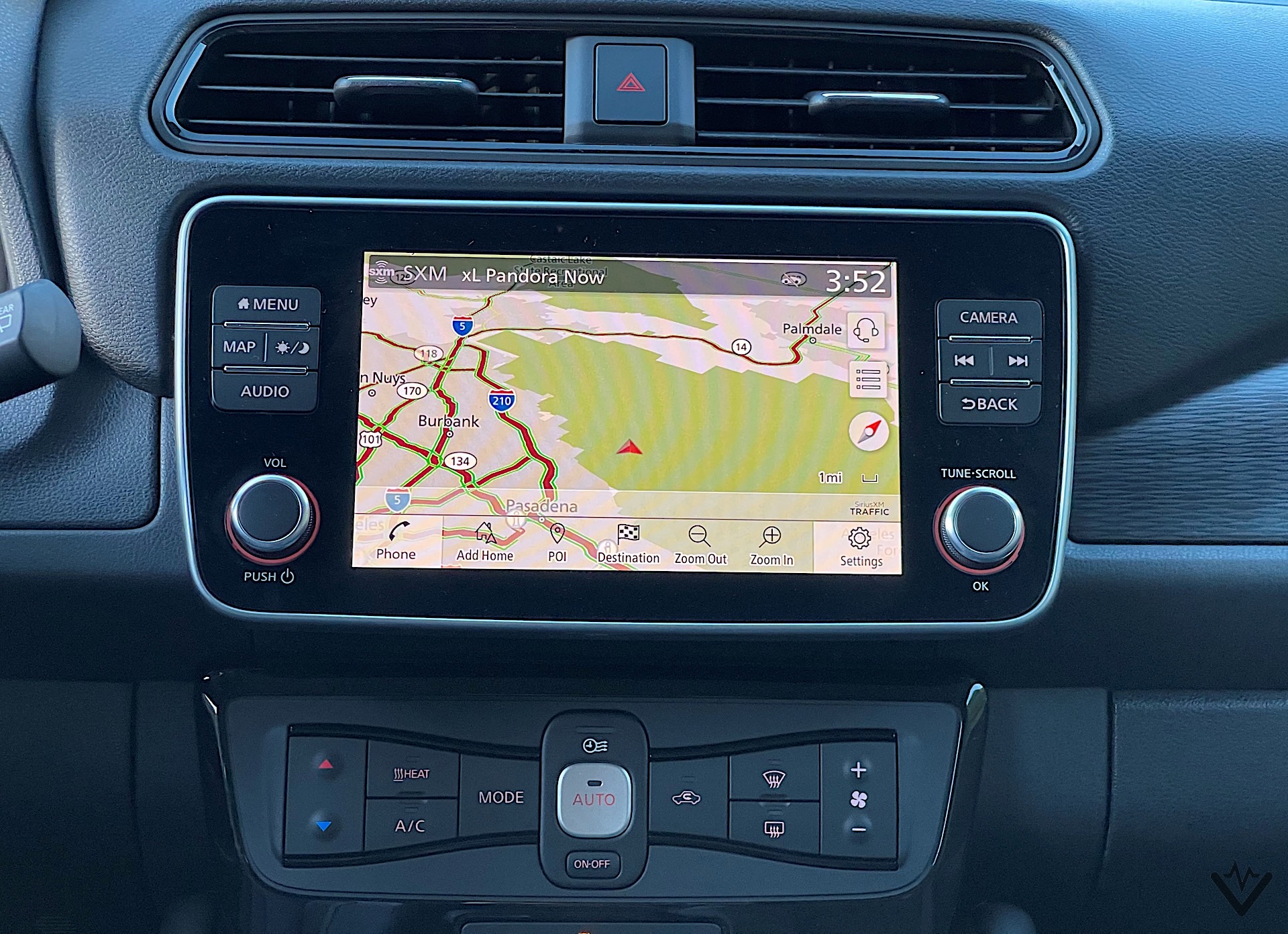
Nissan’s latest infotainment system is a user-friendly unit. The 8.0-inch touch screen is responsive, has clear graphics, and can be reconfigured to your liking. Physical shortcut buttons flanking the display makes the system even more intuitive because you don’t have to dig through submenus. The available seven-speaker Bose audio system is clear and does a great job filling the cabin with music even at higher volumes.
The standard and available driver assistance technologies on the Leaf work in a subtle, unobtrusive manner. Warnings are either gentle beeps or steering wheel vibrations, minimizing the chances of these technologies turning into annoyances. Lane-keeping assist can feel odd when it activates because it uses the brakes instead of the steering to keep you from crossing into another lane. ProPilot Assist, which combines adaptive cruise control, traffic jam assist, and lane centering, does a great job, especially on clearly marked roads. Distances are nicely calibrated; there’s space in the closest setting to execute emergency maneuvers but not enough for someone to cut in between you and the vehicle ahead. Steering inputs are gentle, allowing the car to navigate through easy turns.
2021 Nissan Leaf driving impressions
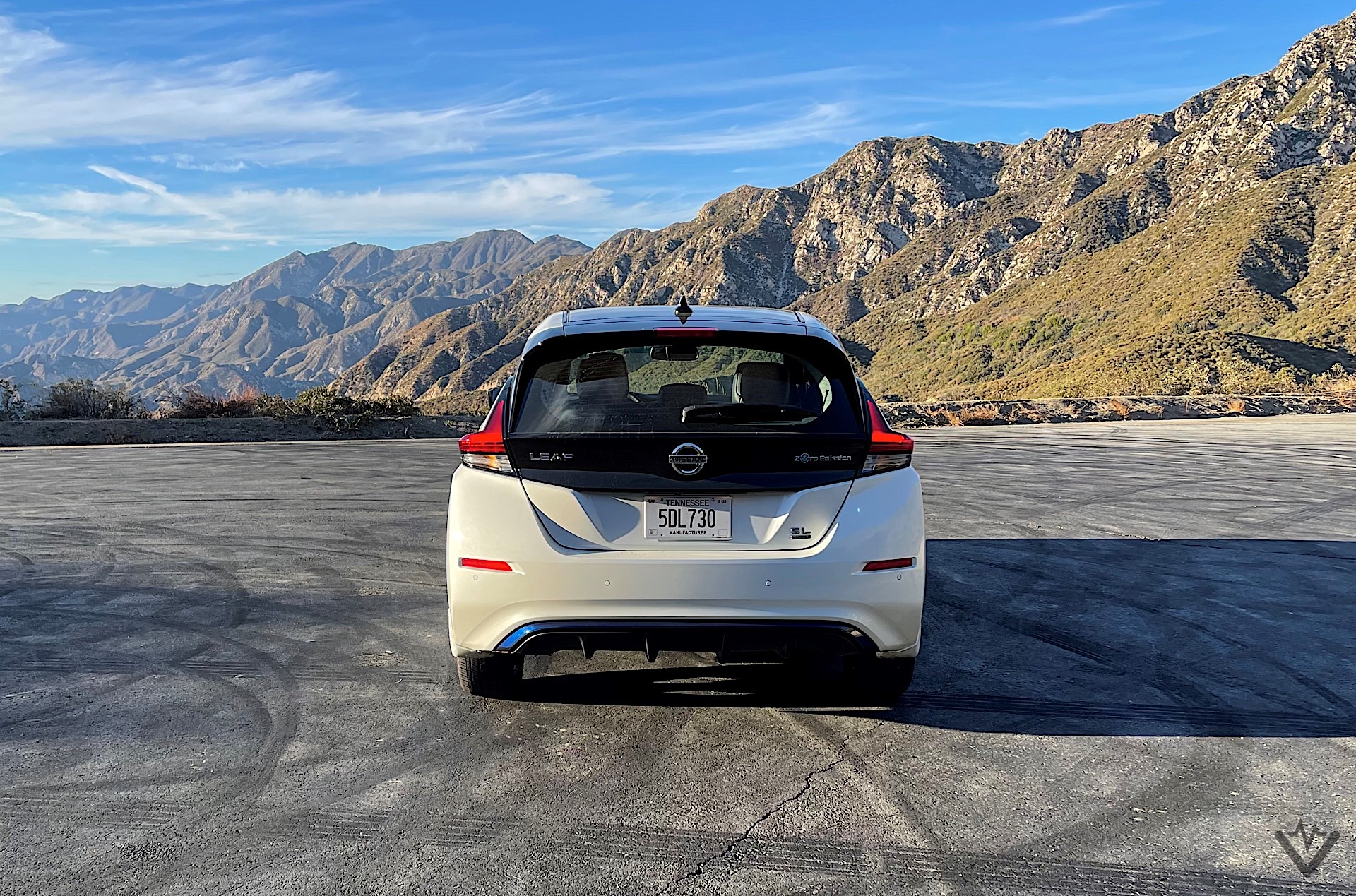
Driving the Nissan Leaf is best described as smooth and easy. The electric motor’s 214 hp and 250 lb-ft of torque provide effortless acceleration particularly when you’re on the move. Don’t expect Tesla-like acceleration from a standstill since torque is being limited to avoid overwhelming the front wheels. Charging the 62-kWh lithium-ion battery takes 11.5 to get to a full charge using a level 2/240V charger. A level 3 charger cuts charging times significantly because it’ll replenish the battery to 80 percent in 45 minutes if it’s depleted. The Leaf is also one of a handful of EVs left that still uses a CHAdeMO port for high-speed charging.
The Leaf excels as a daily driver thanks to its maneuverability and compact dimensions. You can easily squeeze through tight spaces and dart through openings quickly thanks to the car’s tidy footprint and torque-rich powertrain. The floor-mounted passively cooled 62-kWh lithium-ion battery lowers the center of gravity, giving the Leaf good body control. However, this is no hot hatch; the suspension is softly sprung, the steering is light but disconnected, and the eco-focused tires lack grip. On most surfaces, the Leaf does a great job filtering out road imperfections. Over big bumps, potholes, and larger ruts, the car can get a little bouncy, especially successive ones. The Tesla Model 3, Hyundai Kona Electric, and Kia Niro EV are better at isolating the passenger cabin from impacts because of their superior damping.
Nissan’s e-Pedal feature is one of the Leaf’s highlights. This system makes one-pedal driving a breeze because it enables full regenerative braking when you ease off the accelerator. For most of your driving, you don’t need to touch the brake pedal to slow down because regenerative braking can bring the Leaf to a standstill and even hold the car on a hill. When you need the additional stopping power, smooth transitions from regenerative to mechanical braking keeps you from getting jolted around when you stomp on the pedal.
2021 Nissan Leaf pricing
Our test vehicle is a 2021 Nissan Leaf SL Plus dressed in an extra cost two-tone white exterior with a black roof. This test vehicle also came with accessory floor mats and mudguards. All told this Leaf Plus stickers for $46,080. A base Leaf S Plus starts at $39,145. The Leaf also qualifies the federal tax credit and possibly local and state incentives where available.
Final verdict
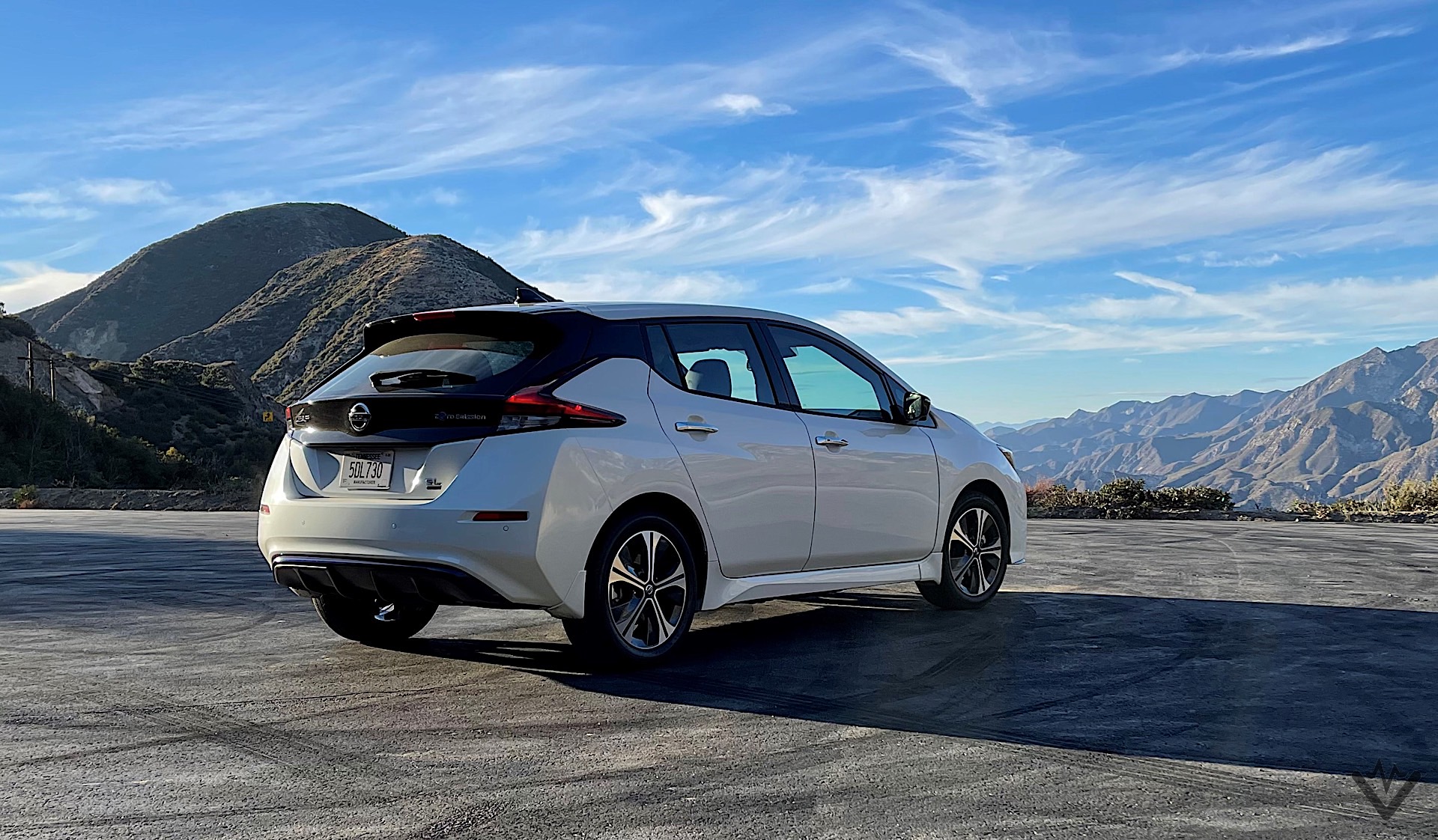
The Leaf Plus is a step in the right direction because it gives Nissan an entry in the mainstream EV segment with over 200 miles of range per charge. This variant takes all of the goodness and practicality offered by the standard Leaf and makes it viable for consumers with longer commutes. However, competition is fierce. Rivals from Tesla, Hyundai, Kia, and Chevrolet all offer more range and active battery cooling. Additionally, they’re all priced similarly, meaning you need to consider whether what the Leaf Plus offers is worth the trade-offs versus its rivals. The Leaf Plus shows that Nissan knows a thing or two about EVs and semi-autonomous technologies. Driving it gets us excited for what’s to come in the Ariya.
At a glance
- Year: 2021
- Make: Nissan
- Model: Leaf Plus
- Trim: SL
- Type: 4-door compact hatchback
- Horsepower: 214 hp
- Torque: 250 lb-ft
- EV Range: 215 miles (S Plus: 226 miles; S and SV non-Plus with 40 kWh battery: 149 miles)
- Pros: Great driver assistance tech, e-Pedal makes one-pedal driving easy
- Cons: Lots of hard plastic in the cabin, passively cooled battery could lengthen charging times
- Base: $39,145
- Price as tested: $46,080

